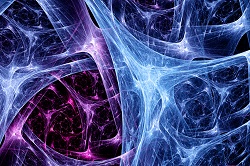How the study of dynamical systems help us better understand quantum chaos
Within the field of mathematics, dynamical systems theory studies the evolution of systems that change in time. Using the so-called ‘evolution rule’ within the approach, researchers should be able to describes future states of phenomena, based on their current states. Predictions could benefit a wide range of fields beyond mathematics, including physics, biology, chemistry, engineering, economics and medicine. The EU-funded LDMRD(opens in new window) (Large Deviations and Measure Rigidity in Dynamics) project was set up to develop new tools in dynamical systems theory, while exploring applications for problems related to mathematical physics, geometry and arithmetic. One of the principal objectives of the project was to further investigate ‘measure rigidity’ which can aid precision measurements when more than one dynamical system behaves very differently over time. Applying the tools The so-called ‘evolution rule’ in dynamical system theory is largely deterministic, meaning that for a specific period of time only, one future state follows the current state. However, some systems are more chaotic in that random external events can actually influence the outcome within systems. It is for this reason that dynamical systems theory has proven particularly applicable to quantum mechanics. As LDMRD project coordinator Dr. Tuomas Sahlsten explains, “It has been particularly useful for studies of systems that are ‘chaotic’, in the sense that two systems can evolve into dramatically different trajectories, even if they start off being close to each other.” The tools required to explore measure rigidity in dynamic systems (based on the work of Bernard Host in the 1990s) were still too far beyond those currently available, which necessitated the team’s acquisition of learning from surrounding disciplines. Thus they borrowed from number theory, representation theory, quantum chaos and other disciplines. As a by-product of this process the researchers discovered the applicability of the project to quantum mechanics which led to a new thermodynamic quantum chaos theorem, combining ideas from large networks. Large networks - such as Big Data, social networks, convolutional neural networks in Artificial Intelligence models - while currently in common use, do not yet have adequate theories to explain how they function. One approach traditionally taken is that of applying spectral theory and the LDMRD team managed to produce fresh insights into the spectral theoretic properties of large scale surfaces, which are analogues of large scale networks. As Dr. Sahlsten reflects, “By far, the discovery of the quantum mechanical connection was the most surprising and exciting aspect of the project. Sometimes it is hard to predict before starting the research what discoveries emerge when you actually begin the process.” Reaching a deeper understanding of quantum chaos With a deeper understanding of quantum chaos, the project has made a major contribution to the understanding of the time evolution of quantum states in chaotic dynamical systems, viewed over a long time period. Being concerned with pure mathematics, the immediate impact of the project will be felt most directly by the quantum mechanics scientific community. Indirectly, as this community plays a major role in realising modern scientific advances and technologies, from weather/climate studies to computer engineering, the project will be contributing to some significant social challenges. In the shorter term as Dr. Sahlsten puts it, ‘‘The next main step is to continue on the quantum chaos questions that are now wide open after our major breakthrough with colleague Etienne Le Masson. Our work has opened a new emerging direction and could lead to major improvements for understanding the theory of large networks.”







